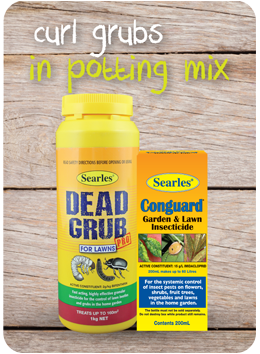Curl grubs/Cockchafer in potting mix
 |
|
Found cockchafers or curl grubs in your potting mix. We explain why they proliferate in potting mixes and how to treat them successfully. Some elements of nature and our localised ecology may enjoy a rich organic potting mix, isolated from predators and generally kept in nice moist conditions. These elements may include the common curl grub (Heteronychus arator). In the circumstances of grubs, during summer, these insects seek places to lay their eggs and pot plants, and sometimes bags of potting mixes can be a prime target. The beetle’s larvae grow into curl style grubs which, uncontrolled can infest existing pot plant soils. Potting mixes do not contain insecticides or other chemicals to treat these various insurgents; which is understandable. No manufacturing process can stop the beetles from laying eggs in pots when they are exposed to such insects. These insects and other components of our local ecology are natural and part of gardening but thankfully, there are various ways to tackle the issues. In the circumstances that your potting mixes contain curl grubs, you can tackle the problem organically by removing the visual grubs by hand, or there are insecticides which can easily be applied to pots and gardens to eradicate them. Searles Dead Grub Pro or Searles Conguard are effective for controlling grubs in pot plants, soil and gardens around the home. Searles do not have any chemicals registered safe for use for edibles planted in potting mix, so hand removal is highly recommended. |
 |




